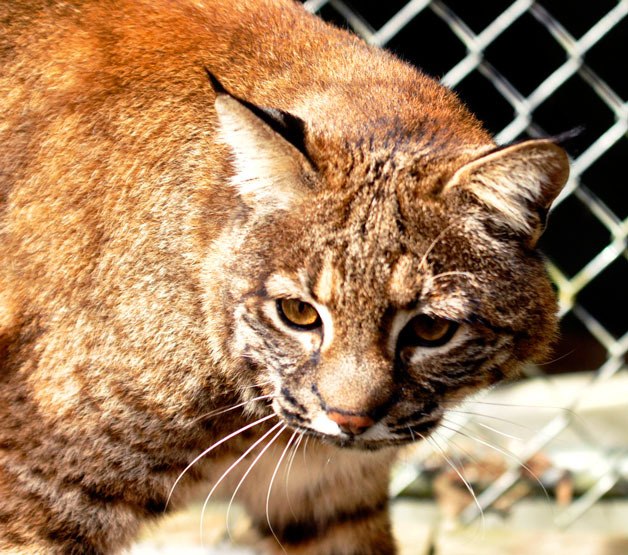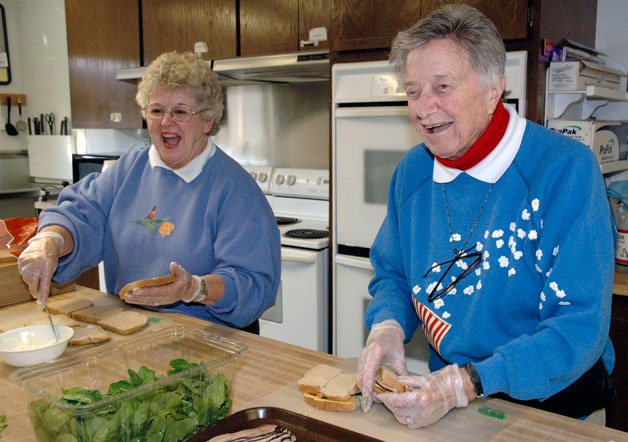ARLINGTON — The Sarvey Wildlife Care Center, a wildlife education and rehabilitation facility, is appealing to the public for donations after facing a $95,000 budget shortfall just before the start of their busiest season.
“Every spring and summer, thousands of animals arrive at the center. Without the funds in place to purchase food, formula, medicine and supplies, we will be forced to make drastic cuts,” said SWCC Executive Director Suzanne West. “In 2012, we had 3,494 animals that we took in. Statistically, our population of incoming patients has grown every year, and the highest we have had is almost 4,000. However, what we are able to do is directly proportionate to how much funding we have.”
The 501(c)3 nonprofit organization relies solely on donations and grants to support its operations, and without the necessary financial support the center faces severe cuts.
“The worst-case scenario is that we would need to drastically reduce the amount of animals we can care for, and we would have to limit our rescue operation due to the gas expenditure. There are places we can cut. It just won’t look pretty for the animals. The other piece of it is, if we have to limit the amount of animals that we have been historically taking in, there are no other rehab facilities that can absorb our numbers. Every year, every rehab facility in our area maxes out. If you are at your capacity, then so is PAWS. So is every other wildlife organization. If we have to even further reduce, then that means more animals won’t get help. It would be the animals that suffer.”
The $95,000 budget shortfall was impacted in part by a reduction in charitable gifts from a private trust foundation.
“One of our donors had to reduce the amount of funding that they were giving us,” said West. “We had relied heavily on them for the last several years. They were really generous. After the founder died they helped purchase this land for the organization. Due to those types of expenditures, they are in a situation where they have to be much more cautious of their principal. It’s a rather new foundation and they are trying to find their path and how they can give in the long haul. They are continuing to support us, but they have to be a little more frugal while they figure out what their bottom line looks like. It was an economic decision solely.”
In 2012, gifts made by that particular foundation made up 25 percent of the SWCC’s total funding.
“We lost about 75 percent of what we were expecting at the beginning of baby season. It was significant. It was definitely a significant amount that we were hoping to get in place by March 1 to lead us into our peak season,” said West. “The nice thing is that as the season continues and more people are finding themselves in a situation with an animal needing help, they will be very generous and make a donation along with bringing in that animal so that we can help treat it.”
One of the issues affecting the center is recent reduction in staffing, so the organization relies heavily on dedicated volunteers.
“The problem is that we don’t have that startup funding,” said West. “We know money will continue to come in every month with donations and animals, but we didn’t have that funding to rely on, and have the staffing in place that we needed and have the resources available.”
Right now the SWCC employs nine full-time employees and one part-time employee.
“We had to reduce our staff by removing two full-time support people,” said West. “We didn’t lay off any of our medical staff, but we had to lay off support staff — people that the clinic will definitely miss.”
The beginning of March is the start of what is called “baby season” — when animals are giving birth — and the orphaned infants are brought to the center. It is the most difficult time for the center’s staff and volunteers as they struggle to treat all of the incoming patients, as well as feed and house other incoming wildlife — all with a severe cut in funding.
“Right now, we have about $20,000 in our account, and that’s before payroll,” said West. “Ideally, at this time, we would have $100,000 in our bank account. Generally speaking, our annual operating budget is $450,000.”
During the peak season, the SWCC spends between $4,000 and $5,000 a month on food.
“Every time we purchase rodents it’s about $1,500 just for one month’s worth of rats,” said West. “Formula can run into the hundreds per month. It fluctuates a lot.”
Medication is another necessary expense for the care center and the cost of supplying those treatments to wounded animals can be very high.
“Every month our medication needs fluctuate too,” said West. “If we can have a run of illnesses that require a certain medication — sometimes those medications cost $200 or $300 for one vial. We are having to make ethical decisions every day on which patients we can treat.”
The Stillaguamish Tribe recently donated an X-ray machine to the center, a gift that helps keep them from driving patients to a veterinary hospital.
“We will probably see a slight reduction in our overhead now that we have the X-ray machine, so we won’t be paying for that service,” said West.
The SWCC is still looking for donations, especially in the form of continued gifts.
“Ideally we would have a full-time veterinarian on staff, and a brand-new state-of-the-art clinic built. We would be able to level some of our habitats and have them rebuilt, since some of them are 20 or 30 years old and in need of a complete and utter start from scratch,” said West.
“What I hope people get out of this is that it is not just our responsibility to care for these animals. In order to do what we do, we have to have public support. The best support that the public can give us is in the form of recurring gifts. If we know that we can count on someone for $10 a month or $50 a month, then we know that we can expect that funding will be coming in. And if everybody gives a little, it all adds up to a lot. Everybody realizes that it’s a community effort. We are here to do this work, but we are giving it back to the community because those birds are going back into their neighborhoods. Those animals are out there on those trails when they are hiking, and they are seeing a deer and coming across an owl in their backyard, and that’s what we are here for. If people enjoy and appreciate wildlife, it is nice if they can support this type of work.”
For more information, or to donate, visit www.sarveywildlife.org. For information on becoming a volunteer, send an email to .







